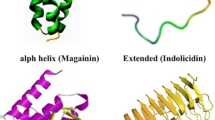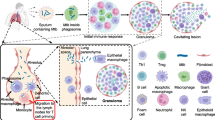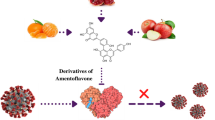Abstract
Herein, we identified a potent lead compound RRA2, within a series of 54 derivatives of 1,2,4-triazolethiols (exhibit good potency as an anti-mycobacterial agents) against intracellular Mycobacterium tuberculosis (Mtb). Compound RRA2 showed significant mycobactericidal activity against active stage Mycobacterium bovis BCG and Mtb with minimum inhibitory concentration (MIC) values of 2.3 and 2.0 µg/mL, respectively. At MIC value, RRA2 compound yielded 0.82 log reduction of colony-forming unit (cfu) against non-replicating Mtb. Furthermore, RRA2 compound was selected for further target identification due to the presence of alkyne group, showing higher selectivity index (> 66.66 ± 0.22, in non-replicating stage). Using “click” chemistry, we synthesized the biotin linker-RRA2 conjugate, purified with HPLC method and confirmed the conjugation of biotin linker-RRA2 complex by HR-MS analysis. Furthermore, we successfully pulled down and identified a specific target protein GroEl2, from Mtb whole-cell extract. Furthermore, computational molecular modeling indicated RRA2 could interact with GroEl2, which explains the structure–activity relationship observed in this study.
Graphical abstract
GroEL-2 identified a potent and specific target protein for RRA 2 compound in whole cell extract of Mtb H37Ra.








Similar content being viewed by others
References
Muñoz-Elías EJ, Timm J et al (2005) Replication dynamics of Mycobacterium tuberculosis in chronically infected mice. Infect Immun 73:546–551. https://doi.org/10.1128/iai.73.1.546-551.2005
Rogerson BJ, Jung Y et al (2006) Expression levels of Mycobacterium tuberculosis antigen-encoding genes versus production levels of antigen-specific T cells during stationary level lung infection in mice. Immunology 118:195–201. https://doi.org/10.1111/j.1365-2567.2006.02355.x
McCune RM, Feldmann FM et al (1966) Microbial persistence. I. The capacity of tubercle bacilli to survive sterilization in mouse tissues. J Exp Med 123:445–468. https://doi.org/10.1084/jem.123.3.445
Cong F, Cheung AK et al (2012) Chemical genetics-based target identification in drug discovery. Annu Rev Pharmacol Toxicol 52:57–78. https://doi.org/10.1146/annurev-pharmtox-010611-134639
Chaudhary PM, Chavan SR et al (2008) Structural elucidation of propargylated products of 3-substituted-1,2,4-triazole-5-thiols by NMR techniques. Magn Reson Chem 46:1168–1174. https://doi.org/10.1002/mrc.2307
Bellamine A, Lepesheva GI et al (2004) Fluconazole binding and sterol demethylation in three CYP51 isoforms indicate differences in active site topology. J Lipid Res 45:2000–2007. https://doi.org/10.1194/jlr.M400239-JLR200
Deng XQ, Song MX et al (2018) Recent developments on triazole nucleus in anticonvulsant compounds: a review. J Enzyme Inhib Med Chem 33:453–478. https://doi.org/10.1080/14756366.2017.1423068
Slivka MV, Korol NI et al (2020) Fused bicyclic 1,2,4-triazoles with one extra sulfur atom: synthesis, properties, and biological activity. J Heterocycl Chem 57:3236–3254. https://doi.org/10.1002/jhet.4044
Vanjare BD, Mahajan PG et al (2020) Novel 1,2,4-triazole analogues as mushroom tyrosinase inhibitors: synthesis, kinetic mechanism, cytotoxicity and computational studies. Mol Diversity 118:195–201. https://doi.org/10.1007/s11030-020-10102-5
Dunford AJ, McLean KJ et al (2007) Rapid P450 Heme Iron Reduction by Laser Photoexcitation of Mycobacterium tuberculosis CYP121 and CYP51B1 analysis of co complexation reactions and reversibility of the p450/p420 equilibrium. J Biol Chem 282:24816–24824. https://doi.org/10.1074/jbc.m702958200
Kharb R, Sharma PC et al (2011) Pharmacological significance of triazole scaffold. J Enzyme Inhib Med Chem 26:1–21. https://doi.org/10.3109/14756360903524304
Pagniez F, Lebouvier N et al (2020) Biological exploration of a novel 1,2,4-triazole-indole hybrid molecule as antifungal agent. J Enzyme Inhib Med Chem 35:398–403. https://doi.org/10.1080/14756366.2019.1705292
Kaur P, Chawla A (2017) 1,2,4-Triazole: a review of pharmacological activities. Int. Res. J. Pharm. 8:10–29. https://doi.org/10.7897/2230-8407.087112
Guardiola-Diaz HM, Foster LA et al (2001) Azole-antifungal binding to a novel cytochrome P450 from Mycobacterium tuberculosis: implications for treatment of tuberculosis. Biochem Pharmacol 61:1463–1470. https://doi.org/10.1016/s0006-2952(01)00571-8
Gülerman NN, Dogan HN et al (2001) Synthesis and structure elucidation of some new thioether derivatives of 1,2,4-triazoline-3-thiones and their antimicrobial activities. Farmaco 56:953–958. https://doi.org/10.1016/s0014-827x(01)01167-3
Akhtar T, Hameed S et al (2010) Design, synthesis, and urease inhibition studies of some 1,3,4-oxadiazoles and 1,2,4-triazoles derived from mandelic acid. J Enzyme Inhib Med Chem 25:572–576. https://doi.org/10.3109/14756360903389864
Wu J, Liu X et al (2007) Synthesis of novel derivatives of 4-amino-3-(2-furyl)-5-mercapto-1,2,4-triazole as potential HIV-1 NNRTIs. Molecules 12:2003–2016. https://doi.org/10.3390/12082003
Moulin A, Demange L et al (2008) Trisubstituted 1,2,4-triazoles as ligands for the ghrelin receptor: on the significance of the orientation and substitution at position 3. Bioorg Med Chem Lett 18:164–168. https://doi.org/10.1016/j.bmcl.2007.10.113
Sarkar D, Deshapande SR et al (2013) 1, 2, 4-Triazole Derivatives and their anti mycobacterial activity. US Patent Appl US. 0060045 A1
Rode ND, Sonawane AD et al (2017) Synthesis, biological evaluation, and molecular docking studies of novel 3-aryl-5-(alkyl-thio)-1H-1,2,4-triazoles derivatives targeting Mycobacterium tuberculosis. Chem Biol Drug Des 90:1206–1214. https://doi.org/10.1111/cbdd.13040
Kong TH, Coates AR et al (1993) Mycobacterium tuberculosis expresses two chaperonin-60 homologs. Proc Natl Acad Sci USA 90:2608–2612. https://doi.org/10.1073/pnas.90.7.2608
Stewart GR, Wernisch L et al (2002) Dissection of the heat-shock response in Mycobacterium tuberculosis using mutants and microarrays. Microbiology 148:3129–3138. https://doi.org/10.1099/00221287-148-10-3129
Monahan IM, Betts J et al (2001) Differential expression of mycobacterial proteins following phagocytosis by macrophages. Microbiology 147:459–471. https://doi.org/10.1099/00221287-147-2-459
Lewthwaite JC, Coates AR et al (2001) Mycobacterium tuberculosis chaperonin 60.1 is a more potent cytokine stimulator than chaperonin 60.2 (Hsp 65) and contains a CD14-binding domain. Infect Immun 69:7349–7355. https://doi.org/10.1128/IAI.69.12.7349-7355.2001
Young DB, Garbe TR (1991) Heat shock proteins and antigens of Mycobacterium tuberculosis. Infect Immun 59:3086–3093. https://doi.org/10.1128/IAI.59.9.3086-3093.1991
Naffin-Olivos JL, Georgieva M et al (2014) Mycobacterium tuberculosis Hip1 modulates macrophage responses through proteolysis of GroEL2. PLoS Pathog 10:e1004132–e1004132. https://doi.org/10.1371/journal.ppat.1004132
Georgieva M, Sia JK, Bizzell E, Madan-Lala R, Rengarajan J (2018) Mycobacterium tuberculosis modulates GroEL2 Dendritic Cell Responses. Infect Immun 86:e00387–e00317. https://doi.org/10.1128/IAI.00387-17
Fong JJ, Sreedhara K et al (2015) Immunomodulatory activity of extracellular Hsp70 mediated via paired receptors Siglec-5 and Siglec-14. The EMBO J. 34:2775–2788. https://doi.org/10.15252/embj.201591407
Washburn A, Abdeen S et al (2019) Dual-targeting GroEL/ES chaperonin and protein tyrosine phosphatase B (PtpB)inhibitors: A polypharmacology strategy for treating Mycobacterium tuberculosis infections. Bioorganic Med Chem Lett 29(13):1665–1672. https://doi.org/10.1016/j.bmcl.2019.04.034
Khan A, Sarkar D (2008) A simple whole cell based high throughput screening protocol using Mycobacterium bovis BCG for inhibitors against dormant and active tubercle bacilli. J Microbiol Methods 73:62–68. https://doi.org/10.1016/j.mimet.2008.01.015
Gao F, Wang T, Xiao J, Huang G (2019) Antibacterial activity study of 1,2,4-triazole derivatives. Eur J Med Chem 173:274–281. https://doi.org/10.1016/j.ejmech.2019.04.043
Aher RB, Sarkar D (2021) 2D-QSAR modeling and two-fold classification of 1,2,4 triazole derivatives for antitubercular potency against the dormant stage of Mycobacterium tuberculosis. Mol Divers. https://doi.org/10.1007/s11030-021-10254-y
Wayne LG, Sohaskey CD (2001) Nonreplicating persistence of mycobacterium tuberculosis. Annu Rev Microbiol 55:139–163. https://doi.org/10.1146/annurev.micro.55.1.139
Jackson CJ, Lamb DC et al (2003) Conservation and cloning of CYP51: a sterol 14 alpha-demethylase from Mycobacterium smegmatis. Biochem Biophys Res Commun 301:558–563. https://doi.org/10.1016/s0006-291x(02)03078-4
Poupin P, Ducrocq V, Hallier-Soulier S, Truffaut N (1999) Cloning and characterization of the genes encoding a cytochrome P450 (PipA) involved in piperidine and pyrrolidine utilization and its regulatory protein (PipR) in Mycobacterium smegmatis mc2155. J Bacteriol 181:3419–3426. https://doi.org/10.1128/JB.181.11.3419-3426.1999
Sarkar D, Sarkar S (2012) A method of screening anti-tubercular compound. WIPO Patent Appl WO 2012(123971):A2
Orme I, Tuberculosis Drug Screening P (2001) Search for new drugs for treatment of tuberculosis. Antimicrob Agents Chemother 45:1943–1946. https://doi.org/10.1128/AAC.45.7.1943-1946.2001
Prosser G, Brandenburg J et al (2017) The bacillary and macrophage response to hypoxia in tuberculosis and the consequences for T cell antigen recognition. Microbes Infect 19:177–192. https://doi.org/10.1016/j.micinf.2016.10.001
Jakkala K, Ajitkumar P (2019) Hypoxic non-replicating persistent Mycobacterium tuberculosis develops thickened outer layer that helps in restricting rifampicin entry. Front Microbiol. https://doi.org/10.3389/fmicb.2019.02339
Rustad TR, Sherrid AM, Minch KJ, Sherman DR (2009) Hypoxia: a window into Mycobacterium tuberculosis latency. Cell Microbiol 11:1151–1159. https://doi.org/10.1111/j.1462-5822.2009.01325.x
Qamra R, Mande SC (2004) Crystal structure of the 65-kilodalton heat shock protein, chaperonin 60.2, of Mycobacterium tuberculosis. J Bacteriol 186:8105–8113. https://doi.org/10.1128/JB.186.23.8105-8113.2004
Wang J, Boisvert DC (2003) Structural basis for GroEL-assisted protein folding from the crystal structure of (GroEL-KMgATP)14 at 2.0A resolution. J Mol Biol 327:843–855. https://doi.org/10.1016/s0022-2836(03)00184-0
Shahar A, Melamed-Frank M, Kashi Y, Shimon L, Adir N (2011) The dimeric structure of the Cpn60.2 chaperonin of Mycobacterium tuberculosis at 2.8 Å reveals possible modes of function. J Mol Biol 412:192–203. https://doi.org/10.1016/j.jmb.2011.07.026
Wayne LG, Hayes LG (1996) An in vitro model for sequential study of shiftdown of Mycobacterium tuberculosis through two stages of nonreplicating persistence. Infect Immun 64:2062–2069. https://doi.org/10.1128/IAI.64.6.2062-2069.1996
Sarkar D (2014) Nitrite-reductase (nirb) as potential anti-tubercular target and a method to detect the severity of tuberculosis disease. WIPO Patent Appl WO. 2014:132263
McDonough KA, Kress Y, Bloom BR (1993) Pathogenesis of tuberculosis: interaction of Mycobacterium tuberculosis with macrophages. Infect Immun 61:2763–2773. https://doi.org/10.1128/iai.61.7.2763-2773.1993
Meldal M, Tornøe CW (2008) Cu-catalyzed azide-alkyne cycloaddition. Chem Rev 108:2952–3015. https://doi.org/10.1021/cr0783479
Hong V, Presolski SI, Ma C, Finn MG (2009) Analysis and Optimization of copper-catalyzed azide-alkyne cycloaddition for bioconjugation. Angew Chem Int Ed 48:9879–9883. https://doi.org/10.1002/anie.200905087
Dan VM, Vinodh JS et al (2020) Molecular networking and whole-genome analysis aid discovery of an angucycline that inactivates mTORC1/C2 and induces programmed cell death. ACS Chem Biol 15:780–788. https://doi.org/10.1021/acschembio.0c00026
Wessel D, Flügge UI (1984) A method for the quantitative recovery of protein in dilute solution in the presence of detergents and lipids. Anal Biochem 138:141–143. https://doi.org/10.1016/0003-2697(84)90782-6
Bradford MM (1976) A rapid and sensitive method for the quantitation of microgram quantities of protein utilizing the principle of protein-dye binding. Anal Biochem 72:248–254. https://doi.org/10.1016/0003-2697(76)90527-3
Vila A, Tallman KA et al (2008) Identification of protein targets of 4-hydroxynonenal using click chemistry for ex vivo biotinylation of azido and alkynyl derivatives. Chem Res Toxicol 21:432–444. https://doi.org/10.1021/tx700347w
Ramdas V, Talwar R et al (2020) Discovery of potent, selective, and state-dependent NaV1.7 inhibitors with robust oral efficacy in pain models: structure activity relationship and optimization of chroman and indane aryl sulfonamides. J Med Chem. 63:6107–6133. https://doi.org/10.1021/acs.jmedchem.0c00361
Silva JC, Denny R et al (2006) Simultaneous qualitative and quantitative analysis of the Escherichia coli proteome: a sweet tale. Mol Cell Proteomics 5:589–607. https://doi.org/10.1074/mcp.M500321-MCP200
Acknowledgements
We are thankful to AstraZeneca, Bangalore, MTCC Chandigarh, India, and Dr. Shekhar Mande, NCCS, Pune (DG CSIR), for providing M. bovis BCG (ATCC 35745), M. smegmatis (ATCC 607) and, M. tuberculosis H37Ra (ATCC 25177) and purified GroEl1 and GroEl2 from M.tuberculosis H37Rv, respectively. Thanks to the Rebecca L Cooper Medical Research Foundation and Director, National Chemical Laboratory, Pune, India, for providing financial support.
Funding
Sarvesh K Soni is the recipient of research grants from Rebecca L Cooper Medical Research Foundation (PG2018098) and ATSE- Priming grant PG181. Sagar Swami has been awarded Senior Research Fellowship (SRF) File no: 31/011(0983)2017/EMR-01) from the Council of Scientific & Industrial Research (CSIR) New Delhi, India.
Author information
Authors and Affiliations
Contributions
Dhiman Sarkar has conceived the experiments and provided an interpretation of the results. Sampa Sarkar, Sagar Swami, Arshad Khan, Sarvesh Soni and Jessica Holien performed the experiments and analysed the data. Sarvesh Soni and Jessica Holien assisted with analysis and interpretation. Dhiman Sarkar, Sampa Sarkar, Sarvesh Soni and Sagar Swami wrote the final manuscript draft.
Corresponding author
Ethics declarations
Conflicts of interest
The authors declare that there is no conflict of interest.
Additional information
Publisher's Note
Springer Nature remains neutral with regard to jurisdictional claims in published maps and institutional affiliations.
Supplementary Information
Below is the link to the electronic supplementary material.
Rights and permissions
About this article
Cite this article
Sarkar, S., Swami, S., Soni, S.K. et al. Detection of a target protein (GroEl2) in Mycobacterium tuberculosis using a derivative of 1,2,4-triazolethiols. Mol Divers 26, 2535–2548 (2022). https://doi.org/10.1007/s11030-021-10351-y
Received:
Accepted:
Published:
Issue Date:
DOI: https://doi.org/10.1007/s11030-021-10351-y




